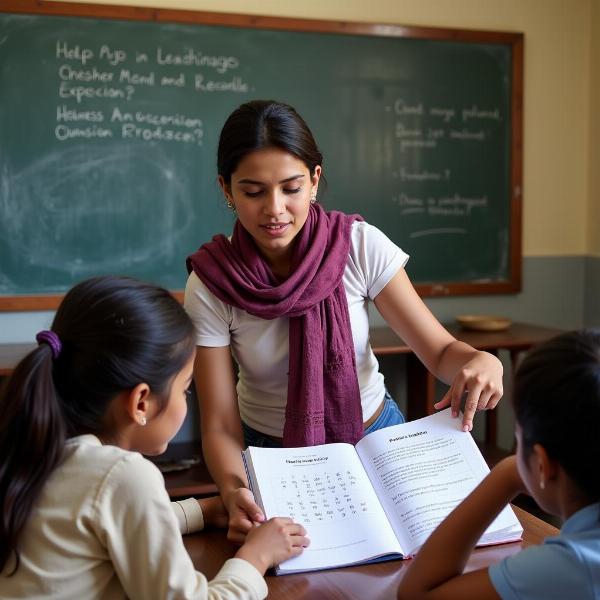Understanding the phrase “I am going to tuition” in the Indian context is crucial for effective communication. While a direct translation might not capture the cultural nuances, this article delves into the various meanings and implications of this common expression, particularly its Hindi equivalent. We’ll explore how “I am going to tuition” is used in different situations and provide you with accurate and culturally appropriate Hindi translations.
Understanding “Tuition” in the Indian Context
In India, “tuition” refers to supplementary private instruction, often outside of regular school hours. It’s a deeply ingrained part of the educational landscape, catering to students of all ages and academic levels. “I am going to tuition” can signify attending classes for various subjects, exam preparation, or skill development. The cultural significance of tuition in India goes beyond academic support; it often represents a family’s investment in a child’s future.
Common Hindi Translations for “I am Going to Tuition”
Several Hindi phrases accurately convey the meaning of “I am going to tuition,” each with its own subtle nuances:
- मैं ट्यूशन जा रहा/रही हूँ (Main tuition ja raha/rahi hoon): This is the most straightforward translation, using the borrowed English word “tuition.” The verb changes depending on the gender of the speaker (raha for male, rahi for female).
- मैं कोचिंग जा रहा/रही हूँ (Main coaching ja raha/rahi hoon): “Coaching” is another commonly used term, often implying more intensive preparation for competitive exams.
- मैं पढ़ाई करने जा रहा/रही हूँ (Main padhai karne ja raha/rahi hoon): This translates to “I am going to study,” and is a more general term that can also encompass tuition classes.
 Hindi tuition class in progress
Hindi tuition class in progress
Choosing the Right Hindi Translation
The most appropriate translation depends on the specific context:
- For general tuition classes: मैं ट्यूशन जा रहा/रही हूँ or मैं पढ़ाई करने जा रहा/रही हूँ are suitable.
- For exam-focused coaching: मैं कोचिंग जा रहा/रही हूँ is more fitting.
- In informal conversations, मैं पढ़ाई करने जा रहा/रही हूँ might sound more natural.
Beyond the Literal Translation: Cultural Implications
“I am going to tuition” also speaks to the importance placed on education and academic achievement in Indian society. It reflects the competitive academic environment and the desire to excel.
Conclusion
“I am going to tuition” meaning in Hindi isn’t just about finding a direct translation, but understanding the cultural context. Whether you use “tuition,” “coaching,” or a more general term like “padhai,” choosing the right phrase depends on the specific situation and the nuance you want to convey. By understanding these subtle differences, you can communicate more effectively within the Indian educational landscape.
FAQ
- What is the most common Hindi translation for “tuition”? The most common translations are “ट्यूशन (tuition)” and “कोचिंग (coaching).”
- Is “coaching” the same as “tuition” in India? While often used interchangeably, “coaching” often implies more intensive, exam-focused preparation.
- When should I use “मैं पढ़ाई करने जा रहा/रही हूँ (Main padhai karne ja raha/rahi hoon)”? This phrase is suitable for general studying, including tuition classes, and is more common in informal settings.
- Why is tuition so prevalent in India? Tuition is deeply ingrained in the Indian education system, supplementing regular schooling and providing extra support for students.
- What does “I am going to tuition” signify culturally? It reflects the emphasis on education and academic achievement in Indian society.
Meaning-Hindi.in is your premier resource for Hindi translations and language services. We offer expert translation for various sectors, including business, legal, technical, educational, and website localization. Our team understands the nuances of both Hindi and English, ensuring accurate and culturally sensitive translations. Need a reliable Hindi translation service? Contact us today at [email protected] or call us at +91 11-4502-7584. Meaning-Hindi.in is here to help you bridge the language gap.